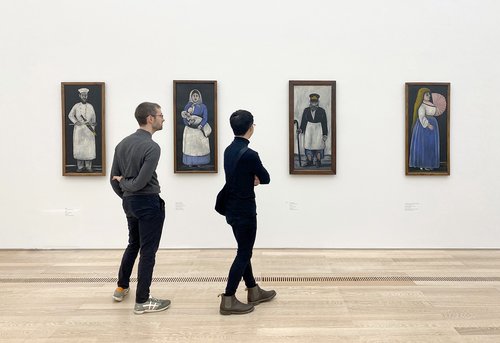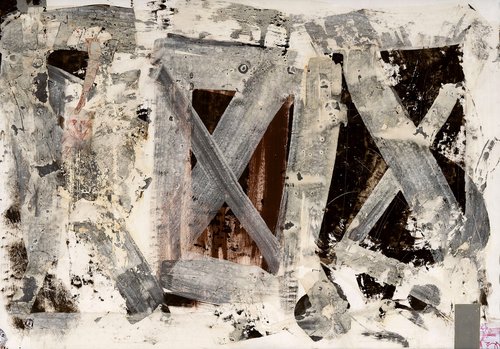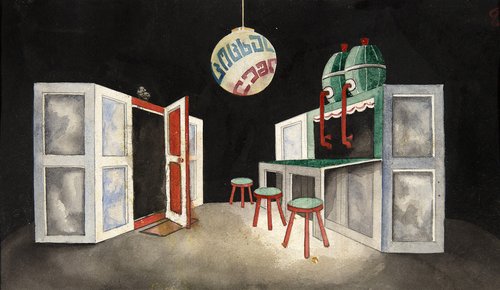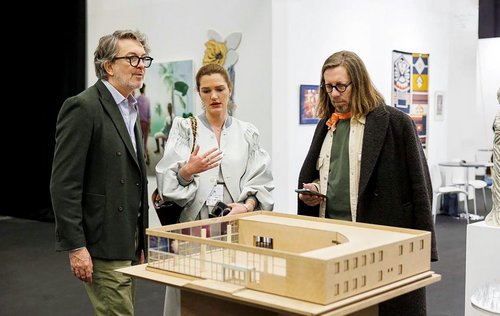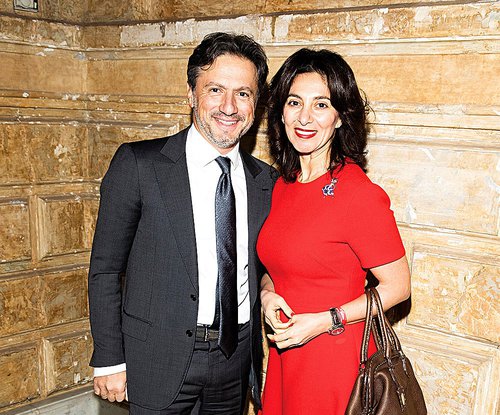Saving Georgian Art

Fragments of Transition: A reflective analysis of Georgian art history on the edge of the 1980–1990s. Exhibition view. Tbilisi, 2025. Courtesy of Art Foundation Anagi
After a quarter-century, gallerist Françoise Friedrich returns to Georgia to find restaurants buzzing, chic hotels rising yet houses still frayed. In a long career shaped by Max Ernst and devoted to bridging East and West, from Georgian non-conformists to the touring Dialog exhibitions, a collection of Georgian art Friedrich acquired in the 1980s is currently on show at the Art Foundation Anagi (AFA) in Tbilisi. Here she reflects on art’s irrepressible protest and her own fight for freedom – even as she greets AI’s promise with wary distrust.
It was Françoise Friedrich’s passion for surrealist polymath Max Ernst (1891–1976) that sparked off her career in the art world. His poetry spoke to her as a young woman, and then she was intrigued by his graphic works which she first exhibited and sold when she became a gallerist in Germany in the mid 1970s. What was it that brought this French lover of surrealism into the constellation of late soviet art from mostly Georgia, but also Russia, a path few Westerners tread?
We meet in Paris during Art Basel week in her charming Montparnasse apartment; beautiful stained glass turn of the century windows looking over the Boulevard Raspail. Friedrich grew up in an adjacent building, having been born in Paris in 1943, the daughter of a diplomat who knew Tsuguharu Foujita (1886–1968) and other Ecole de Paris emigree artists who lived in the 14th arrondissement and sometimes came over for dinner. From an early age she was exposed to other cultures at home and I imagine it must have set her compass. The tall white walled ceilings densely hung with paintings and drawings gathered over many decades, marking out different parts of her life as a gallerist, not shaped by any obvious ‘buy-hold-sell’ mentality. Here an Asger Jorn (1914–1973) décollage, there some Eric Bulatov (b. 1933) drawings and prints, a small painting by Francis Picabia (1879–1953) and dotted around some of her beloved Georgian artists.
It all started in the late 1980s with an encounter with a Georgian émigré called Boris Kahanashvili who later became her husband. Once day he told her about a whole studio of Georgian paintings which a friend of his had sent to New York and was trying to sell to raise funds for the artists to travel to Europe. They were the 10th Floor Collective (so called because they worked in a studio on the tenth floor of an apartment high rise in Tbilisi) all producing work counter to the Soviet Realist canon, formalist or conceptual paintings made with unconventional materials, including industrial paints. Undeterred, without seeing any photographs of the works, Friedrich took the bold step of buying up all the works that had been in the studio and were now in New York. They had all been rolled up together, some paintings stuck to others, almost glued together, they had nearly been destroyed, it turned out that in New York, no-one wanted them.
Now some of these paintings belong to and form the core of a current show at the Art Foundation Anagi in Tbilisi, ‘Fragments of Transition: A reflective analysis of Georgian art history on the edge of the 1980–1990s’. It is a part reconstruction of two exhibitions Friedrich curated in Germany in the 1990s when she first introduced unofficial Georgian art to Western audiences. In one of the shows called ‘Dialog’ (Berlin, 1994) she boldly cut across boundaries presenting Russians and Georgians alongside German and French artists.
Friedrich has always liked bridging cultures, in 1991 she curated an exhibition in Smolny convent in St Petersburg just after the putsch where she showed two German contemporary artists which later toured to Moscow, Kyiv and Tbilisi until civil unrest started up in the Georgian capital and she had everything shipped back to France.
On show in the exhibition are vibrant abstract paintings by pioneering artist Alexandre Bandzeladze (1927–1992) and rare early work by Koka Ramishvili (b. 1956) and monochrome works by Gia Edzgveradze (b. 1953). These paintings have not been seen in their native Georgia since they were packed up and sent abroad over three decades ago. Friedrich tells me how artist Gia Rigvava (b. 1956) was moved to tears when he saw his ‘Portrait of My Son’, a three metre wide canvas covered with marks and collage in the spirit of minimalism and automatic painting which he made in 1988. Bold, experimental and uncompromising in their vision, these artists typically painted on a massive scale, although there was no museum at the time who could show them.
Friedrich made the trip from Paris to Tbilisi for the opening – a quarter of a decade had passed since she was last there. She noticed first the noise of the city, claxons beeping, life bustling, restaurants full of chatter and beautifully designed boutique hotels, “but the houses still in a bad shape” she adds. She wanted to see the paintings by Niko Pirosmani (1862–1918) at the Art Museum of Georgia, but it was closed, instead there was the antique gold at the National Museum which left a big impression and her eyes light up when she talked about it.
I ask her what it is about the Georgian art of the 1980s and 90s that she finds most interesting: “It is engagé, it always had something to protest about. I have always loved protestors”. She does not see herself as a protestor but talks of how she has always "tried to fight for freedom", and we talk of her friends in Georgia, how they are no longer able to go into the streets to protest. She has seen the proverbial ‘man’s in humanity to man’ play out through so many different eras, and now of AI she laments ‘It is great but very dangerous, if well used it is fine but I don’t trust the humans!’.
As we finish I am interested in what advice she would give to young gallerists starting out today. The catch is, she concurs, that today you need to be a big global brand with a huge credit line, but that kind of monolithic, scaled up big business does not suit her at all. “I am too much of a surrealist myself to have a big gallery” she tells me.
Fragments of Transition: A reflective analysis of Georgian art history on the edge of the 1980-1990s
Tbilisi, Georgia
9 July – 31 December 2025










